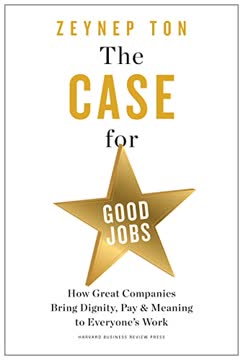Key Takeaways
1. Good jobs are not just ethical, they're profitable
"It's not altruism. It's good business."
Invest in people. Companies like Costco, Trader Joe's, and QuikTrip have proven that paying higher wages, providing better benefits, and investing in employee development can lead to superior business performance. These companies enjoy lower turnover, higher productivity, better customer service, and stronger financial results. By focusing on creating value for customers through empowered and motivated employees, these companies have built sustainable competitive advantages.
Operational choices matter. The good jobs strategy combines investment in people with four key operational choices:
- Focus and simplify
- Standardize and empower
- Cross-train
- Operate with slack
These choices enable companies to leverage their investment in people by increasing productivity, improving customer service, and driving continuous improvement. The result is a virtuous cycle of high performance and employee satisfaction.
2. The vicious cycle of low investment and poor performance
"Profit can hide many sins."
Mediocrity is expensive. Many companies are trapped in a vicious cycle of low wages, high turnover, poor operational execution, and declining performance. This cycle is self-reinforcing: low investment in people leads to high turnover and poor execution, which hurts financial performance, leading to further cost-cutting and underinvestment.
Key elements of the vicious cycle:
- Low wages and unstable schedules
- High employee turnover
- Poor operational execution
- Declining customer satisfaction
- Financial pressure to cut costs further
Breaking free requires courage. Escaping this cycle requires leaders to recognize the true costs of mediocrity and have the courage to invest in people and operations, even when short-term financial pressures push against it.
3. Market wages aren't enough: The true cost of low pay
"If you understand that people have to pay for food and lodging and everything else and you try to make it possible for people to buy a home and to be able to send their kids to good schools, then you look at your business a little differently."
Living wages matter. Many companies pay "market wages" that are insufficient for employees to meet basic needs. This creates financial stress that impacts job performance, health, and family well-being. Even a $15/hour wage is often below the living wage in many areas, especially for single parents.
Consequences of low pay:
- Financial stress and anxiety
- Difficulty focusing on work
- Health problems
- Cognitive impairment ("bandwidth tax")
- Unstable home environments for children
Pay affects ability. Low pay doesn't just reflect worker ability - it actively diminishes it. Financial stress makes it harder for workers to perform well, creating a self-fulfilling prophecy of low expectations and poor performance.
4. High turnover is more expensive than you think
"If it was a machine, we'd take care of that machine every day. We'd make sure it's running properly, it's oiled properly, it's cleaned properly, it's shut down properly. We don't do that with our employees."
Direct costs add up. The direct costs of turnover - recruiting, hiring, onboarding, and training - are often higher than companies realize. In some industries, these costs can amount to 20-45% of annual payroll.
Indirect costs are even higher. The hidden costs of turnover include:
- Lost productivity during vacancies and training periods
- Lower quality and customer service from inexperienced staff
- Higher error rates and waste
- Increased workload and burnout for remaining employees
- Loss of organizational knowledge and customer relationships
Competitive disadvantage. High turnover makes it difficult for companies to build the capabilities needed to differentiate themselves and adapt to change. It creates a workforce that can't be trusted or empowered, limiting a company's ability to innovate and improve.
5. Corporate disabilities from underinvesting in people
"It's the basic stuff we can't execute on."
System-wide weaknesses. Companies operating with high turnover and low investment develop a set of interrelated disabilities that prevent them from performing well:
- Can't hire the right people or train them well
- Can't trust or empower employees
- Can't match labor supply with demand
- Can't develop or retain strong managers
- Can't hold employees to high expectations
Vicious cycle reinforces mediocrity. These disabilities reinforce each other, creating a system that makes excellence impossible. Breaking free requires addressing the whole system, not just individual elements.
6. Overcoming fears and doubts about investing in workers
"We are not a company that tends to make bets on its people."
Common objections. Many leaders fear investing in frontline workers, citing concerns such as:
- Can't quantify the benefits
- Investors won't support it
- Implementation risks are too high
- Workers might take advantage
Reframing the question. Instead of asking "Does investment in people pay off?", successful leaders ask: "Can we be a strong and lasting company—one that wins with our customers and adapts to changes—if we don't invest in our people?"
Evidence supports investment. Companies that have made the leap to good jobs have seen significant improvements in turnover, productivity, customer satisfaction, and financial performance. The competitive benefits of a stable, motivated workforce extend beyond what can be easily quantified.
7. Leaders with conviction drive successful change
"This organization has a lot of courage muscles. We believed we were doing the right thing. We just stuck to our guns."
Customer-centric mindset. Leaders who successfully implement good jobs systems prioritize creating value for customers above short-term financial metrics. They see investing in frontline workers as essential to delivering great customer experiences.
Ethical imperative. These leaders also view providing good jobs as a moral obligation and a key part of their company's purpose and values. They refuse to compromise on worker well-being for short-term gains.
Disciplined focus. Successful leaders maintain discipline in growth, avoiding the temptation to expand too quickly at the expense of operational excellence. They are willing to say no to opportunities that don't align with their core value proposition.
8. How to start the virtuous cycle of good jobs
"You have to pay people and offer good benefits … and then you can expand out from there. But if you're just trying to do a few things around the edges, you can't expect too much."
Invest early in pay. Raising wages is often the most crucial first step in breaking the vicious cycle. It reduces turnover and financial stress, enabling other improvements.
Subtract to add. Simplify operations by removing unnecessary complexity in products, promotions, and processes. This frees up resources to invest in people and makes jobs more manageable.
Key steps to start the virtuous cycle:
- Raise pay for key positions
- Improve schedule stability
- Create clear career paths
- Reduce workload complexity
- Smooth out demand variability
- Cross-train employees
9. Empowering employees and continuous improvement
"Before the FIC [Frontline Idea Cards], you never felt like your ideas were being heard. You could say something to someone, but it didn't go anywhere."
Build trust first. Empowerment and continuous improvement initiatives are most effective after establishing a foundation of stability and trust through better pay and working conditions.
Involve frontline workers. Successful companies create formal mechanisms to collect and implement ideas from frontline staff. This taps into their knowledge of customer needs and operational challenges.
Elements of effective empowerment:
- Clear decision-making authority
- Training on problem-solving techniques
- Regular forums to share ideas (e.g., daily huddles)
- Recognition and rewards for improvements
- Management support and follow-through
10. Sustaining excellence through commitment devices
"Temporary suspensions don't tend to stay temporary. They can put you in a vicious cycle."
Resist short-term pressures. Even after establishing a good jobs system, companies face ongoing temptations to cut corners for short-term gains. Successful companies create "commitment devices" to maintain their focus on long-term excellence.
Examples of commitment devices:
- Costco's 15% maximum markup on products
- Targeting 100% internal promotion for management roles
- Explicit stakeholder prioritization (e.g., customers first, then employees)
- Requiring removal of a menu item to add a new one
Continuous reinvention. Staying the course doesn't mean resisting all change. Companies must continue to innovate and evolve while staying true to their core principles of investing in people and operational excellence.
Last updated:
FAQ
What’s The Case for Good Jobs by Zeynep Ton about?
- Core argument: The book demonstrates that companies can offer good jobs—characterized by dignity, pay, and meaning—while remaining profitable and competitive.
- Contrast of strategies: It contrasts the “bad jobs” approach (minimizing labor costs, high turnover) with the “good jobs” system (investing in people, operational excellence, low turnover).
- Systemic change: Ton advocates for a systemic, interconnected approach that benefits employees, customers, and investors, addressing broader societal issues like inequality and declining trust in capitalism.
- Leadership focus: The book highlights leaders who have successfully implemented this system, showing that courageous, ethical leadership is key to transformation.
Why should I read The Case for Good Jobs by Zeynep Ton?
- Insight into labor challenges: The book reveals the hidden costs of low wages and high turnover, showing how they undermine operational performance and company resilience.
- Practical, evidence-based guidance: It provides actionable strategies and real-world examples from companies like Costco, Mercadona, and Sam’s Club.
- Leadership inspiration: Ton addresses common fears and doubts, offering encouragement and a roadmap for leaders to drive meaningful change.
- Ethical and financial case: The book connects doing right by workers with long-term business success, making it relevant for leaders, managers, and anyone interested in sustainable business.
What are the key takeaways from The Case for Good Jobs by Zeynep Ton?
- Good jobs are profitable: Investing in employees and operational excellence leads to higher productivity, better customer service, and sustainable profitability.
- Systemic approach required: Isolated fixes (like raising pay alone) are insufficient; a holistic system combining people investment and operational changes is necessary.
- Leadership matters: Courageous, customer-centric, and ethical leadership is essential to break out of the vicious cycle of mediocrity.
- Continuous improvement: Sustaining good jobs requires ongoing focus on management development, employee empowerment, and operational simplification.
What is the “good jobs system” described in The Case for Good Jobs by Zeynep Ton?
- Four operational choices: The system is built on focus and simplify, standardize and empower, cross-train, and operate with slack, all of which reduce complexity and empower employees.
- Investment in people: Companies must pay living wages, offer stable schedules, create career paths, and set high expectations to stabilize the workforce.
- System interdependence: These elements work together; improving one without the others won’t yield sustainable results.
- Customer-centricity: The system centers on enabling frontline workers to deliver value to customers, which drives sales and profitability.
How does Zeynep Ton define “bad jobs” and their impact in The Case for Good Jobs?
- Low pay and high turnover: Bad jobs are characterized by low wages, unstable schedules, and minimal investment in employees, leading to high turnover.
- Operational dysfunction: This approach results in understaffing, poor training, and weak management, causing mistakes, burnout, and poor customer service.
- Vicious cycle: Companies get trapped in a cycle where cost-cutting further degrades employee conditions, worsening performance and profitability.
- Human and business costs: Low pay harms workers’ well-being and motivation, while also increasing direct and indirect costs for the company.
What are the four key operational choices in the “good jobs system” from The Case for Good Jobs by Zeynep Ton?
- Focus and simplify: Reduce unnecessary complexity in products, services, and processes to make work more manageable and efficient.
- Standardize and empower: Standardize routine tasks while empowering frontline employees to make decisions and solve problems.
- Cross-train employees: Balance specialization and flexibility by training employees in multiple roles, improving adaptability and teamwork.
- Operate with slack: Staff above the bare minimum to prevent burnout, reduce errors, and allow time for coaching and improvement.
How does The Case for Good Jobs by Zeynep Ton explain the vicious and virtuous cycles in companies?
- Vicious cycle: Low pay leads to high turnover, understaffing, and poor execution, which reduces profitability and prevents investment in people, perpetuating mediocrity.
- Virtuous cycle: Investing in people and simplifying operations reduces turnover, stabilizes schedules, and empowers employees, leading to better service, higher sales, and improved profitability.
- Systemic change needed: Only a holistic approach addressing both people and operations can break the vicious cycle and create lasting improvement.
- Company examples: Firms like Quest Diagnostics and Sam’s Club saw dramatic improvements after implementing the good jobs system.
What fears and challenges do leaders face when adopting the good jobs strategy in The Case for Good Jobs by Zeynep Ton?
- Fear of uncertain ROI: Leaders struggle to quantify the benefits of investing in people compared to traditional investments like technology or marketing.
- Investor and board skepticism: Boards often view people investments as risky or less legitimate, favoring short-term financial metrics.
- Implementation complexity: Systemic change is complex and slow, and people investments are expensed immediately, making leaders hesitant.
- Doubts about employees: Some managers fear that higher pay won’t lead to higher productivity, worrying about appearing naive if results don’t materialize.
What leadership qualities and values support the good jobs strategy in The Case for Good Jobs by Zeynep Ton?
- Customer-centric fiduciary duty: Leaders prioritize serving customers and recognize the essential role of frontline employees in delivering value.
- Ethical commitment: They are committed to doing the right thing for employees and customers, even at the expense of short-term profits.
- Discipline and long-term focus: Successful leaders focus on sustainable growth, operational excellence, and continuous improvement.
- Courage and conviction: They overcome fear and skepticism, making bold decisions to invest in people and system change.
What are the recommended first steps for implementing the good jobs system in The Case for Good Jobs by Zeynep Ton?
- Triage workforce stability: Start by reducing turnover and understaffing through pay raises, better schedules, clear expectations, and career paths.
- Simplify operations: Remove unnecessary products, services, and tasks to reduce employee burden and improve focus.
- Stabilize workload and schedules: Use scheduling and operational changes to reduce variability and prevent burnout.
- Invest early in pay: Prioritize wage increases for roles with the highest turnover and greatest customer impact to build a stable foundation.
Which companies and leaders are highlighted in The Case for Good Jobs by Zeynep Ton as successful examples?
- Costco and Jim Sinegal: Costco’s high wages, internal promotions, and operational discipline have led to long-term growth and employee loyalty.
- Mercadona: Spain’s largest supermarket chain maintains low turnover and high customer satisfaction through simplification and empowerment.
- Quest Diagnostics: The company transformed its call centers by raising pay, simplifying operations, and empowering employees, cutting turnover by over 50%.
- Sam’s Club and John Furner: By combining pay raises with operational improvements, Sam’s Club reduced turnover, increased sales, and improved customer satisfaction.
How can companies sustain momentum and continuous improvement after adopting the good jobs system, according to The Case for Good Jobs by Zeynep Ton?
- Develop strong managers: Train managers to coach, give feedback, and focus on team development rather than constant firefighting.
- Empower frontline employees: Enable workers to solve customer problems and contribute ideas, fostering ownership and adaptability.
- Create improvement routines: Use daily huddles, idea cards, and standardization with employee input to build a culture of continuous improvement.
- Use commitment devices: Establish public commitments (like pricing policies or promotion targets) to resist short-term pressures and maintain long-term focus.
Review Summary
The Case for Good Jobs argues for paying workers better and investing in them to improve customer service and profitability. Reviewers praise Ton's research-backed approach, case studies, and focus on blue-collar workers. The book outlines strategies like raising pay, improving schedules, and empowering employees. While some criticize the lack of original research and actionable advice, most reviewers found the book insightful and relevant across industries. Many appreciated Ton's emphasis on treating workers with dignity and creating a virtuous cycle of low turnover and operational excellence.
Similar Books



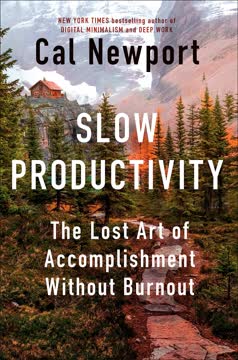


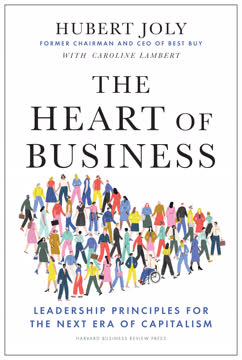
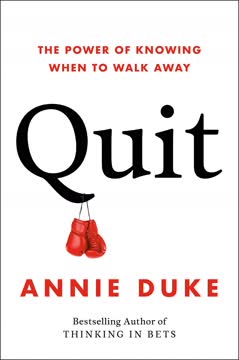
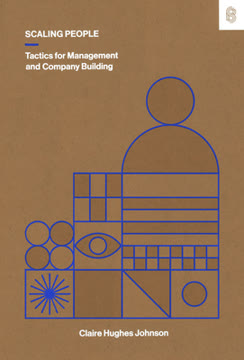

Download PDF
Download EPUB
.epub digital book format is ideal for reading ebooks on phones, tablets, and e-readers.
